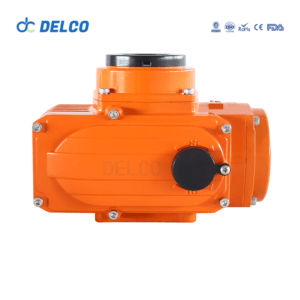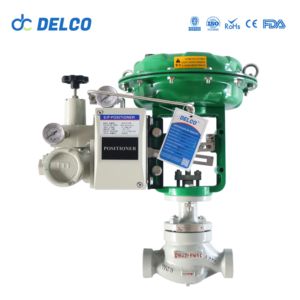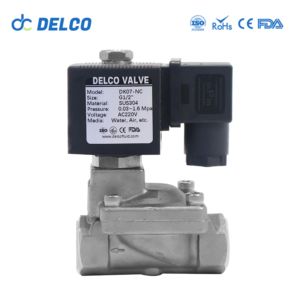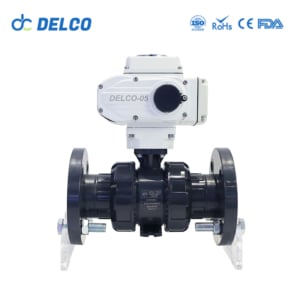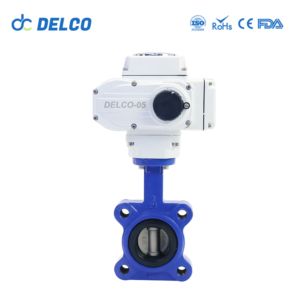We don’t just provide simple quotations, but we are experts in selection, calculation and drawing.
Top Picks
-
DELCO DK07 Pilot Operated Diaphragm Type Stainless Steel Solenoid Valve
Pilot Operated Solenoid Valve Read more
DELCO Steam 3-way Pneumatic Control Valve with Pneumatic Acuator
The 3-way pneumatic control valve presents several distinct advantages. Its opening and closing speed can be readily adjusted due to its uncomplicated structure, making maintenance procedures straightforward. Moreover, the inherent buffer characteristics of the gas utilized during operation render it less prone to damage from jamming incidents. In specific explosion-proof environments, pneumatic valves offer superior reliability compared to their electric counterparts.
Model: Pneumatic Control Valve
Size Range: 1/2”~12′
Pressure Range: 1.6~6.4Mpa
Material: Stainless Steel 304, 316, 316L or WCB
Introduction to Pneumatic Control Valves:
The 3-way pneumatic control valve operates by harnessing compressed gas as its power source, utilizing a cylinder as the actuator. With the assistance of a valve positioner, converter, solenoid valve, retaining valve, gas tank, gas filter, and other accessories, it drives the valve to achieve on/off functions or proportional adjustments. This valve receives control signals from industrial automation systems to regulate various process parameters in pipeline mediums, including flow, pressure, temperature, and liquid level.
Characterized by its simplicity in control, rapid response, and intrinsic safety, the 3-way pneumatic control valve eliminates the need for additional explosion-proof measures. Its advantages lie in the ease of adjusting the opening and closing speed, its simple structure, and ease of maintenance. Additionally, the gas buffer characteristics during operation minimize the risk of damage due to jamming, rendering it more reliable than electric valves in certain explosion-proof scenarios.
Introduction to Pneumatic Control Valves:
| Type | Single-seat, double-seat, sleeve | Nominal diameter | DN15-DN300 |
| Nominal pressure | PN16 to PN63 |
Connection | Flange, thread, weld (Or other customer specified) |
| Structure | Standard type (-20℃ ~+200℃ ) | Material | WCB, 304, 316, 316L |
| Cooling type | (-40~450℃ ) | Low-temperature type | (-60℃ ~-196℃ ) |
| Packing | V type PTFE, flexible graphite | Adjustable range | 50:01:00 |
Valve components: Single-seat plunger core type; 304, 316+ SLT core seat with equal percentage, linear, quick-opening low characteristics.
Valve Actuator: Multi-spring diaphragm actuator in direct action & reverse action. NBR rubber reinforcing polyester fabric diaphragm material. Spring range 20~100KPa, 40~200KPa, 80~240KPa. Supply pressure from 0.4MPa to 0.5MPa
Action type: Air to close FO (With direct action actuator), when the air supply failure, actuator spring open the valve; Air to open FC (With reverse action actuator) When the air supply failure, actuator spring closes the valve. Linear, equal percentage, quick opening
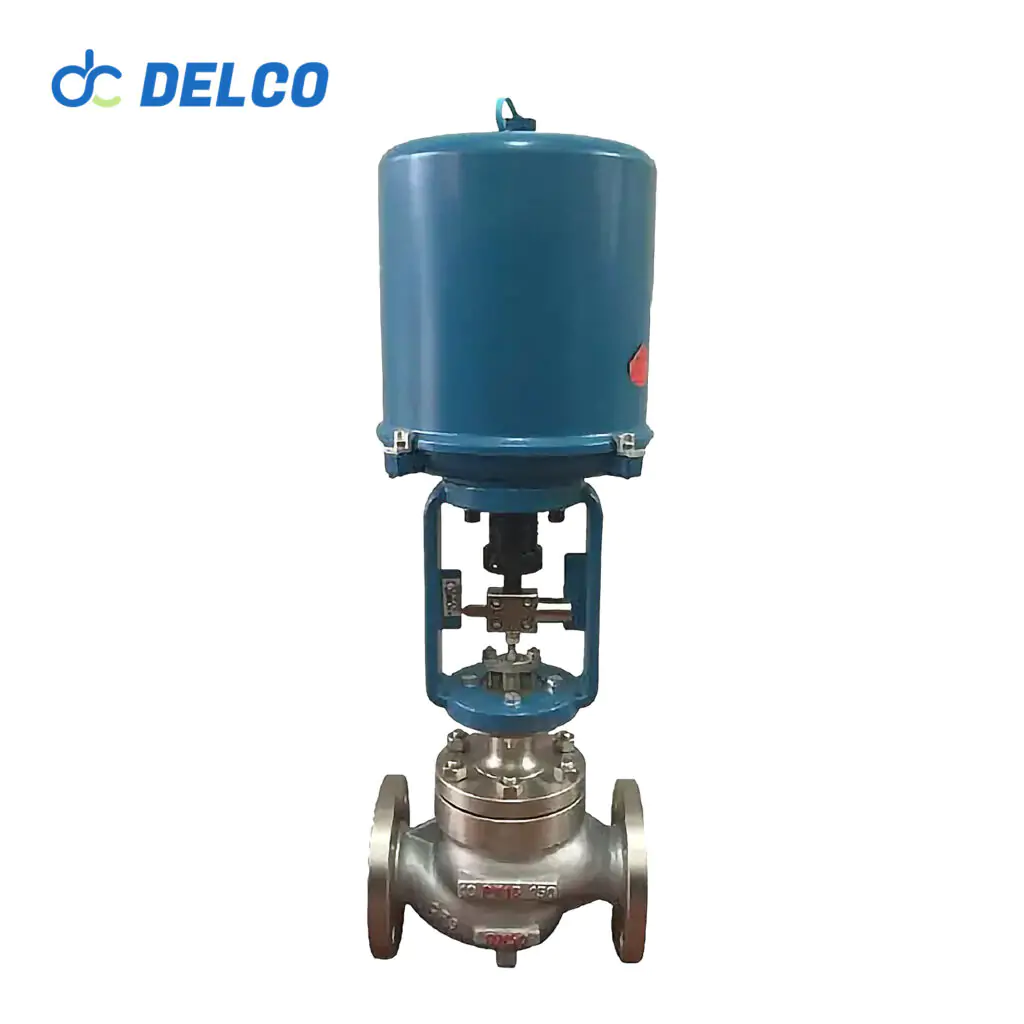
When selecting a control valve, consider the following factors:
Flow requirements: Evaluate the flow characteristics needed for the specific application.
Flow Characteristics: Consider the fluid’s properties, such as viscosity, pressure, and temperature, to select a valve that can handle the specific conditions.
Valve size: Choose a valve size that matches the pipeline size and meets the required flow capacity.
Actuator type: Decide between manual, electric, pneumatic, or hydraulic actuation based on the system requirements and available resources. Select an actuator that provides adequate force and meets the desired control requirements.
Material compatibility: Ensure the valve materials are compatible with the fluid being handled to avoid corrosion or other damage.
Regulatory requirements: Adhere to industry-specific regulations and standards to ensure safe and efficient operation.
Noise and vibration: Option for a valve design that minimizes noise and vibration for a safer, more reliable operation.
Get A Quick Quote
RECOMMEND
-
DELCO DK07 Pilot Operated Diaphragm Type Stainless Steel Solenoid Valve
Pilot Operated Solenoid Valve Read more
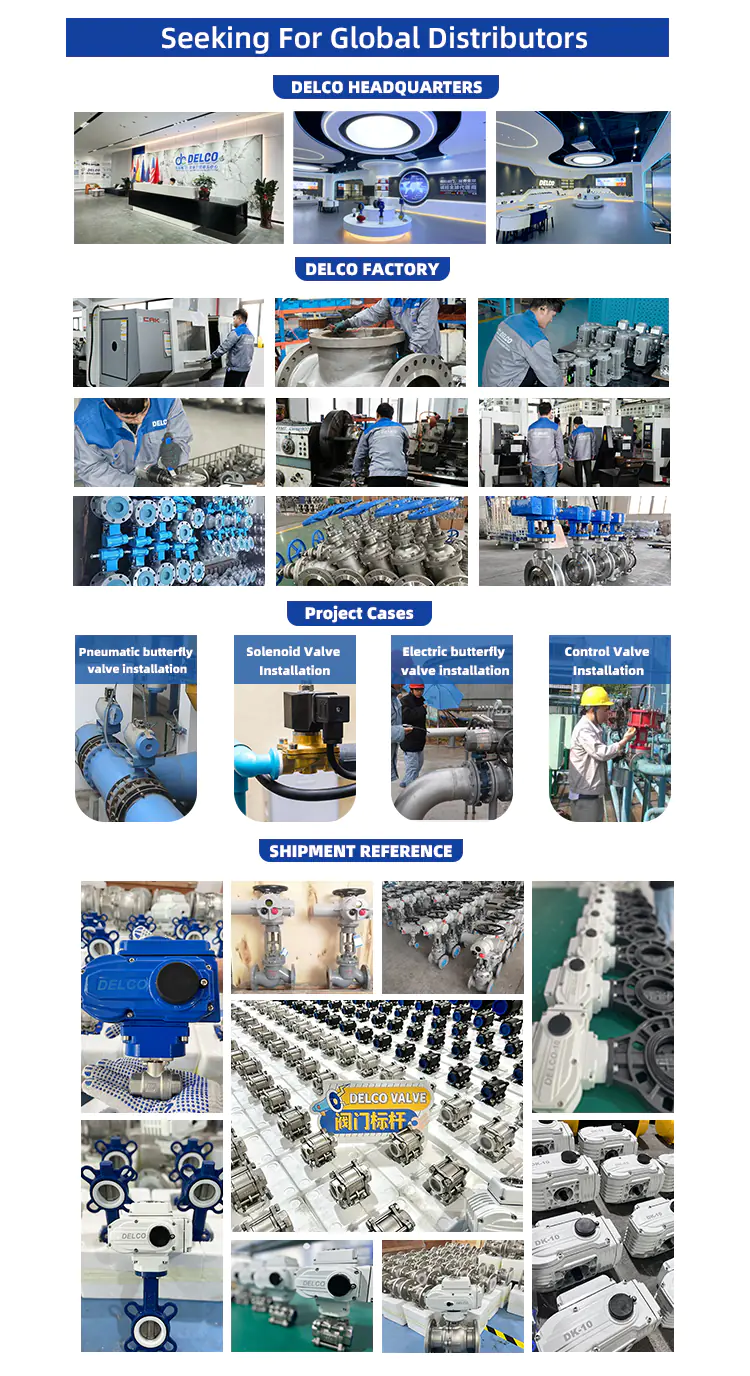
Get A Quick Quote
RECOMMEND
-
DELCO DK07 Pilot Operated Diaphragm Type Stainless Steel Solenoid Valve
Pilot Operated Solenoid Valve Read more

